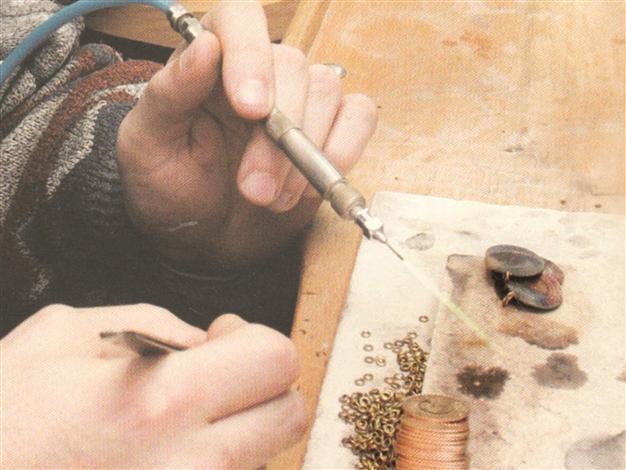Money in the Ottoman Empire
Hürriyet Daily News

In the Ottoman, monetary exchange was based on coins since paper money was not introduced until the 19th century at roughly the same time it began circulating in Europe.
Gold is now found scattered all over the world, but in ancient times it was produced only in Egypt, Anatolia, Greece, Transylvania, Spain, Arabia and India. Legends abound from Jason and his pursuit of the Golden Fleece in the eastern Black Sea to the Queen of Sheba bringing gold to Solomon from the Sudan region. The first gold coins appear in Lycia in the southwestern part of Anatolia.
Gold is a soft metal and therefore easy to handle and mould into various shapes, but in order to be used for coins other substances must be added for the coin to be hard enough to endure excessive handling. An ounce of gold can be stretched into a thin wire that extends for 35 miles. This malleability makes the metal an ideal resource for jewelry and gold dust mixed with other materials was often used in calligraphy on book covers and other kinds of decoration.
With the conquest of Anatolia and their expansion into Europe the Ottoman Turks took over systems for acquiring gold that were already in place. The Venetians, who were most deeply involved in trade, had been bringing gold to the West from the eastern Black Sea. North Africa acquired its gold by caravan over the Saharan desert. The Sudan region supplied gold through Cairo. As the Ottomans drove deeper into the Balkans, they took over gold mines there.
Monetary exchange was based on coins since paper money was not introduced until the 19th century at roughly the same time it began circulating in Europe. That meant that gold and silver were important commodities and carefully protected. The historian Fernand Braudel notes in his two-volume work “The Mediterranean and the Mediterranean World in the age of Philip II” that gold came to be in short supply in Europe some time beginning in 1520. However, he does not take into account the Ottoman conquest of Egypt in 1516-1517. The gold supply that was traditionally sold through traders in Cairo was disrupted and instead diverted to the Ottoman treasury. The Venetians were no longer able to take gold freely from the Crimean, and the mines in the Balkans were under Ottoman control.
Silver akçe the official currency The official currency of the Ottoman Empire was the silver akçe that has been traced back to Osman Bey who reigned from 1299 to 1324. The silver akçe continued to be used until the 17th century when the first Ottoman gold coin appeared during the reign of Fatih Sultan Mehmed in 1478. Copper was first minted in the reign of Murad I from 1359 to 1389 and was intended for use as change for the silver akçe.
Mints were set up in places like Diyarbakır, Van and Baghdad with considerable care paid to the sources of gold and silver and careful oversight was undertaken to ensure that the coins were not debased. Inspectors were regularly sent to see that everything was in order and if anyone was caught, they were dismissed from their positions and sent to Istanbul for punishment where they would most likely be executed.
Throughout much of the first half of the Empire, Ottoman coins competed with foreign currencies such as Venetian gold pieces, Egyptian pare and in some areas controlled by the Ottomans such as the Crimea and Wallachia, local currencies met the needs of the populace. Over time and due to numerous wars the Empire was engaged in the Ottomans became unable to meet its financial obligations and was forced to debase its currency.
The Ottomans used balance scales in order to determine the price of items such as meat or bread. They also tested the weight of coins to determine whether or not they were counterfeit.
Price controls were a common way to ensure public welfare and a maximum price known as narh would be set by the government. This was given so much importance that even grand viziers would conduct narh inspections. The price set was not arbitrary, but would be determined under the supervision of a kadi or judge with input from the concerned merchants or artisans. The price of materials was taken into consideration and a profit of 10 to 20 percent added to the cost. This system was sufficiently flexible that these price controls could be changed when circumstances dictated it. For example when the army was mobilized to go to war, it would leave cities like Istanbul with fewer provisions so prices would be raised. The inspectors, appointed to carry out checks on quality and quantity, were authorized to levy penalties on the spot. More complicated cases would be referred to judges.
The sultan’s income The sultan had his own privy purse and for much of the Empire’s existence, his income came from a share in the booty obtained in war, the collection of taxes in the territories north of the Danube and from places like Diyarbakir, Baghdad and Crete. The high level officials of the Empire and members of the imperial dynasty were not salaried in the way we understand things today. They would be assigned the revenue of various estates or villages and these would return to the treasury when they left their positions or died. Where the harem women were concerned, the sources of their income and even their jewelry returned to the sultan’s privy purse, as it was he who had granted these in the first place. The Janissary corps were treated separately throughout the Empire. The amount of money each was to receive would be weighed and sealed in a bag by the grand vizier before they were handed out.
For the most part, the Ottoman financial system worked until the 19th century. At times it perhaps did not work as well as one might have wished, but it worked.

